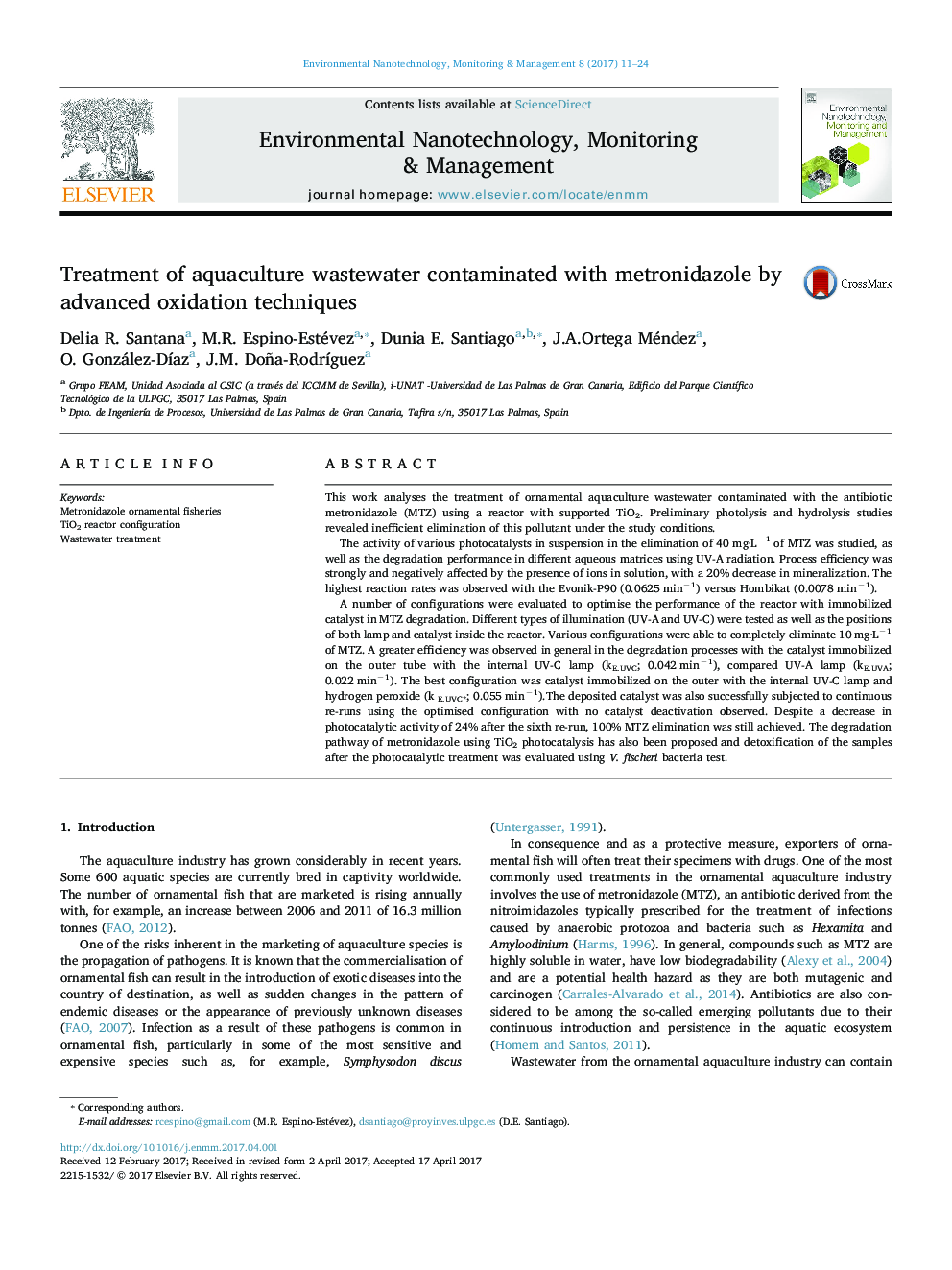| کد مقاله | کد نشریه | سال انتشار | مقاله انگلیسی | نسخه تمام متن |
|---|---|---|---|---|
| 5748482 | 1619099 | 2017 | 14 صفحه PDF | دانلود رایگان |
- The photocatalytic elimination of MTZ was proved for different water matrices.
- Several commercial and a home-made photocatalyst were studied and compared.
- Several immobilized TiO2 configurations were evaluated.
- The use of UV-A and UV-C lamps was compared and H2O2 was added to the system.
- An economic evaluation indicates that the treatment of water with MTZ is feasible.
This work analyses the treatment of ornamental aquaculture wastewater contaminated with the antibiotic metronidazole (MTZ) using a reactor with supported TiO2. Preliminary photolysis and hydrolysis studies revealed inefficient elimination of this pollutant under the study conditions.The activity of various photocatalysts in suspension in the elimination of 40 mg·Lâ1 of MTZ was studied, as well as the degradation performance in different aqueous matrices using UV-A radiation. Process efficiency was strongly and negatively affected by the presence of ions in solution, with a 20% decrease in mineralization. The highest reaction rates was observed with the Evonik-P90 (0.0625 minâ1) versus Hombikat (0.0078 minâ1).A number of configurations were evaluated to optimise the performance of the reactor with immobilized catalyst in MTZ degradation. Different types of illumination (UV-A and UV-C) were tested as well as the positions of both lamp and catalyst inside the reactor. Various configurations were able to completely eliminate 10 mg·Lâ1 of MTZ. A greater efficiency was observed in general in the degradation processes with the catalyst immobilized on the outer tube with the internal UV-C lamp (kE.UVC; 0.042 minâ1), compared UV-A lamp (kE.UVA; 0.022 minâ1). The best configuration was catalyst immobilized on the outer with the internal UV-C lamp and hydrogen peroxide (k E.UVC*; 0.055 minâ1).The deposited catalyst was also successfully subjected to continuous re-runs using the optimised configuration with no catalyst deactivation observed. Despite a decrease in photocatalytic activity of 24% after the sixth re-run, 100% MTZ elimination was still achieved. The degradation pathway of metronidazole using TiO2 photocatalysis has also been proposed and detoxification of the samples after the photocatalytic treatment was evaluated using V. fischeri bacteria test.
Journal: Environmental Nanotechnology, Monitoring & Management - Volume 8, December 2017, Pages 11-24
